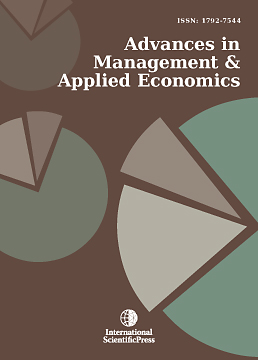Advances in Management and Applied Economics
Can the Development of Renewable Energy Improve Total-Factor Carbon Emissions Efficiency? Evidence from 30 Provinces in China
-
 [ Download ]
[ Download ]
- Times downloaded: 729
Abstract
The global temperature is exceeding 1.5°C above pre-industrial levels due to the increasing carbon emissions, and developing renewable energy is expected to be one of the most effective solutions. However, whether the development of renewable energy contributes to curbing the carbon emissions while maintaining economic development is still under investigation. Using the total-factor carbon emission efficiency (TFCEE), this paper first measures the carbon emission abatement and economic development of 30 provinces in China from 2005 to 2019. Then, based on the super-efficiency slacks-based measure (SE-SBM) model, the panel threshold models and spatial Durbin models are established to comprehensively investigate the impact of RED on TFCEE. The findings reveal that: (1) RED significantly improves TFCEE. For every 1% increase in RED, TFCEE experiences a rise ranging from 0.020% to 0.035%. (2) The beneficial effect of RED on TFCEE increases with economic restructuring and technological progress. (3) The indirect impact of RED on TFCEE through spatial spillover is significantly greater than its direct effect. Potential transmission mechanisms for this spatial spillover effect are the cross-regional mobilization of renewable electricity and the diffusion and absorption of low-carbon knowledge and technologies. The above conclusions provide empirical evidence for China and other developing countries to formulate appropriate energy transformation strategies.
Keywords: Renewable energy development; Total-factor carbon emissions efficiency; Transmission mechanism; Spatial spillover effect; Nonlinear effect.
